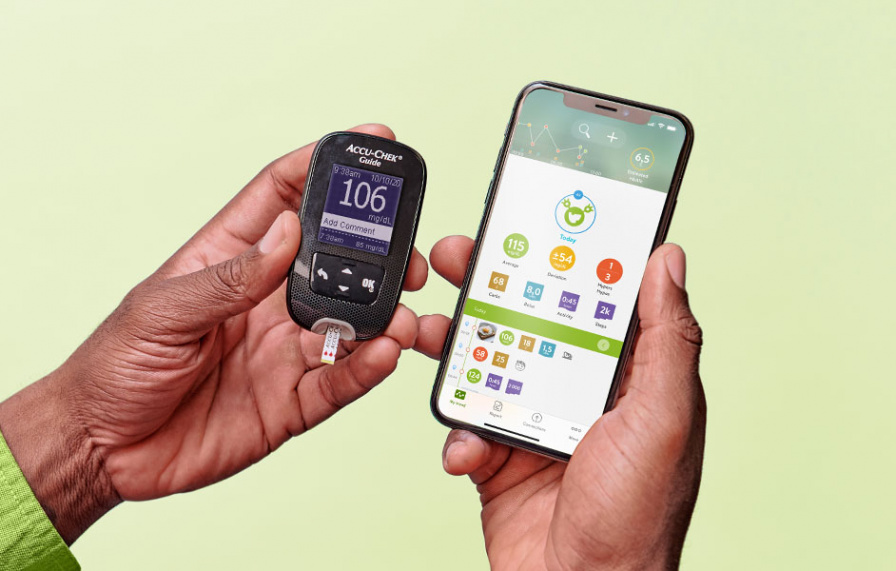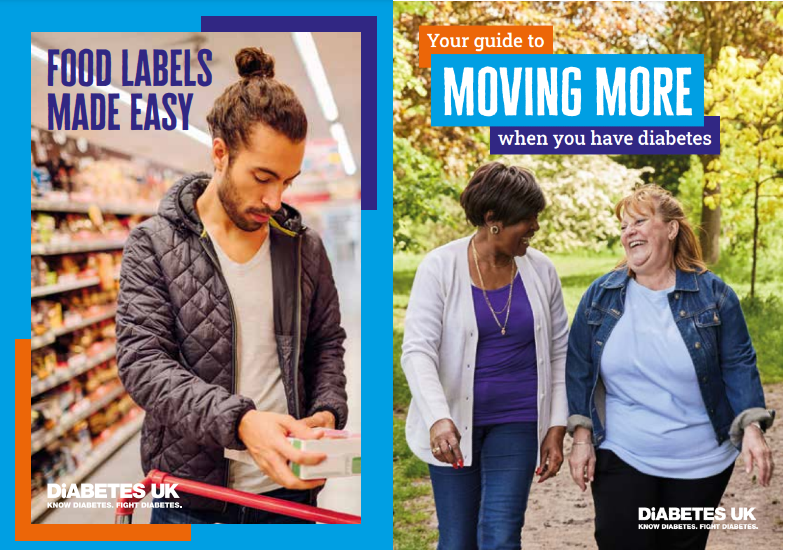
For Diabetes Awareness Week 2022, we wanted to discuss diabetes as a chronic condition, and the increasing importance of home-based disease management. As diabetes affects a wide demographic of patients, it’s important that there are a range of different management tools in place.
In this blog, we discuss three important features that patients may look for in a healthcare management strategy, including: forward-thinking tech, social learning opportunities and simple, user-friendly materials. We look at examples of each format and consider the lessons that can be learned from diabetes management when it comes to future patient materials.
About diabetes
Diabetes is a chronic health condition characterised by elevated blood glucose levels. This occurs when the body’s ability to produce or respond to the hormone insulin is impaired. The main forms of diabetes include: Type 1, which is most commonly diagnosed in childhood, around the ages of 13-141 and Type 2, which usually develops later in life, often over the age of 40.2
Diabetes is a lifelong condition, which requires consistent management strategies in order to sustain a good level of health. The three main aspects of diabetes management include:
- Maintaining a healthy lifestyle – including a balanced diet and regular exercise
- Monitoring blood glucose levels – and making sure they are kept within the recommended range
- Medication –which may include regular doses of insulin or metformin to regulate blood sugar
In this blog, we discuss some of the patient materials that are available to help with these tasks.
Diabetes management in the NHS
Unfortunately, diabetes is increasing in prevalence. The number of individuals living with a type of diabetes has doubled over the last 15 years, leading to concerns that this current trajectory will cause a public health emergency.3 This, alongside current capacity issues throughout the NHS, and an ageing population (thereby, increasing the number of people living with chronic conditions), all adds to mounting concerns for our healthcare services’ ability to cope.
To combat this, the NHS long-term plan set out ambitions to invest more heavily in support for home-based chronic disease management, with goals including4:
- Boosting ‘out-of-hospital’ care services
- Supporting patients with more personalised care
A personalised management plan
When it comes to healthcare, we all have our preferences for what works best for us. Here, we examine three of the different features that patients may look for:
1. Forward-thinking tech
Those of us who grew up during an age of digital innovation, specifically the millennial and Gen-Z generations, look for ways to incorporate healthcare services into an already tech-focused lifestyle.5 This could take the form of the apps which are increasingly used to schedule GP appointments, view medical records or order repeat prescriptions. Beyond this, these generations are often some of the first to adopt new and exciting digital healthcare technologies,6 such as those described in our Femtech blog.
When it comes to diabetes management, one of the resources likely to benefit these patients is an all-in-one diabetes management app, like mySugr. These apps act as a hub for recording metrics related to the three cornerstones of diabetes management. For example, with the mySugr app, patients can:
- Log food choices and exercise sessions
- Record blood glucose levels when paired with a compatible device
- Calculate required insulin doses

Colour coding and other visuals are used to make measurements easier to interpret. Image from mySugr.com
2. Social learning
While more convenient for some, for others, the move to more home-based disease management may feel isolating, as if they are left to cope with their condition alone.
Despite initiatives to make diabetes management more self-driven, there are also ways to bring patients together, or otherwise incorporate instructor-led support into the disease management process. One of the main selling points of instructor-led learning in general is that it creates an open dialogue. In the case of disease management, this can provide patients with the option to explore their diagnosis and the management strategies available to them more deeply, in the presence of an expert.
In the UK, a series of diabetes education courses are available which may be recommended to those newly diagnosed with either Type 1 or Type 2 diabetes.7 One example is DAFNE (dose adjustment for normal eating), a course designed to help patients with Type 1 diabetes to manage their blood glucose levels while living as normal a life as possible.
While many of these courses, including DAFNE moved online following the coronavirus pandemic, the DAFNE online course still incorporates a mix of online learning and remote group sessions facilitated by specialist educators, retaining the element of group interaction.8
3. Simple and user-friendly solutions
With many aspects of our lives becoming more digital, particularly in a post-pandemic world, it can be easy to assume that the majority of people have a certain level of digital literacy. However, many patients from older generations are often not confident or just not interested in using newer technology.
According to studies by the Pew Research Center, while the proportion of those 65 years old and over adopting key technologies has grown over the past decade,6 nearly three quarters of this demographic confess to asking for help getting started with new devices.9 Beyond this, older patients are more likely to have multiple, concurrent health conditions to manage,10,11 meaning there is still very much a demand for straight-forward, physical management materials that can be easily combined with other treatment plans
Diabetes UK produces a range of straight-forward resources which are a great help for these individuals, including the Food Labels Made Easy Guide which can be printed off either by patients or their HCPs. This guide in particular is designed to be taken to the supermarket and used as a ‘quick reference guide’, providing more information on ‘diabetes friendly’ choices on the go.

Diabetes UK provide a range of simplified guides for diabetes management. Image adapted from Diabetes UK
Lessons for marketers
While diabetes is a good example of a condition that impacts a range of demographics, the needs of individuals should be a consideration when it comes to creating patient materials for any condition. This means considering the impact of factors such as socio-economic background, culture, disability and more. In order to be inclusive of all patients, it is important to consider them early on in the planning process.
A good example of this is the argument around older generations, or those with limited funds, falling behind as more and more of our world moves toward digital. While broadly, digital may be the way forward, there will always be a need for physical products, in-person learning opportunities and more.
If you’re looking for help creating targeted and engaging patient materials, get in touch today to find out more about the range of services we offer








